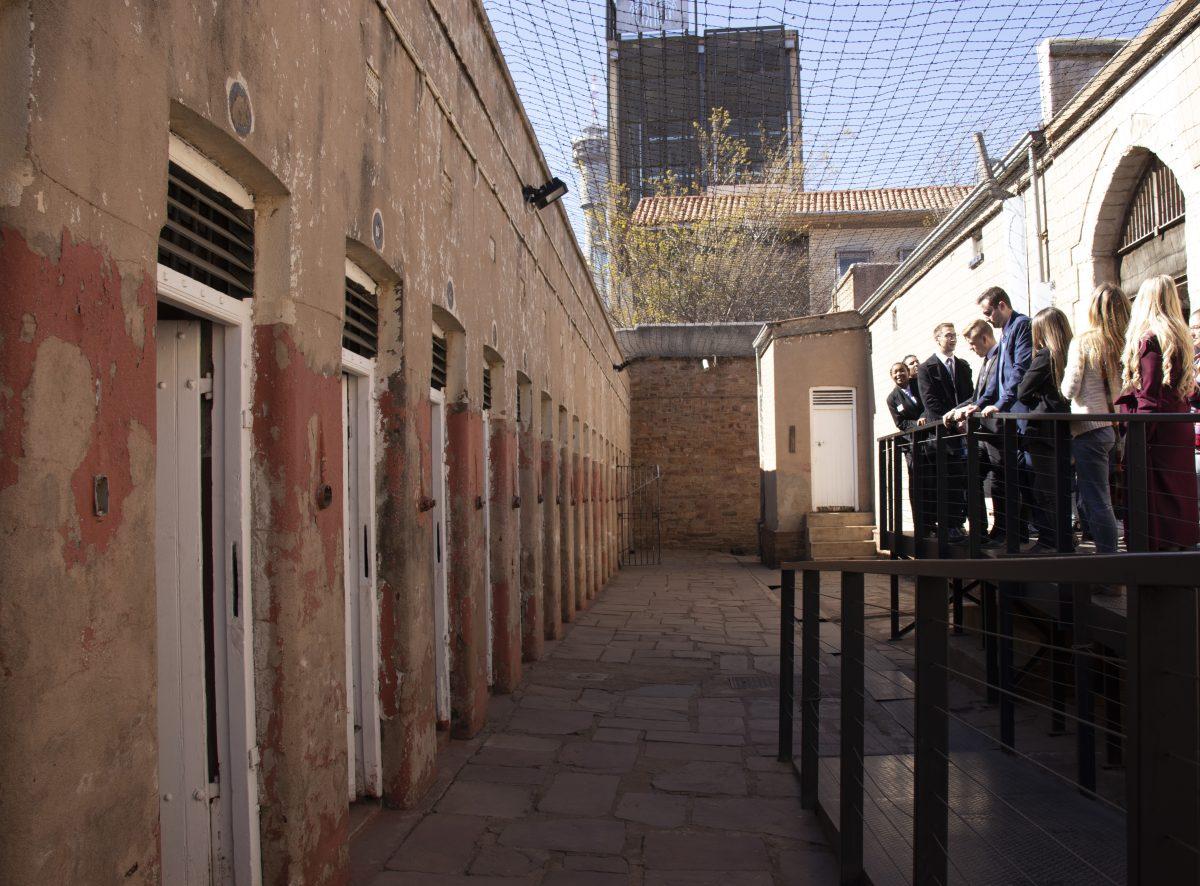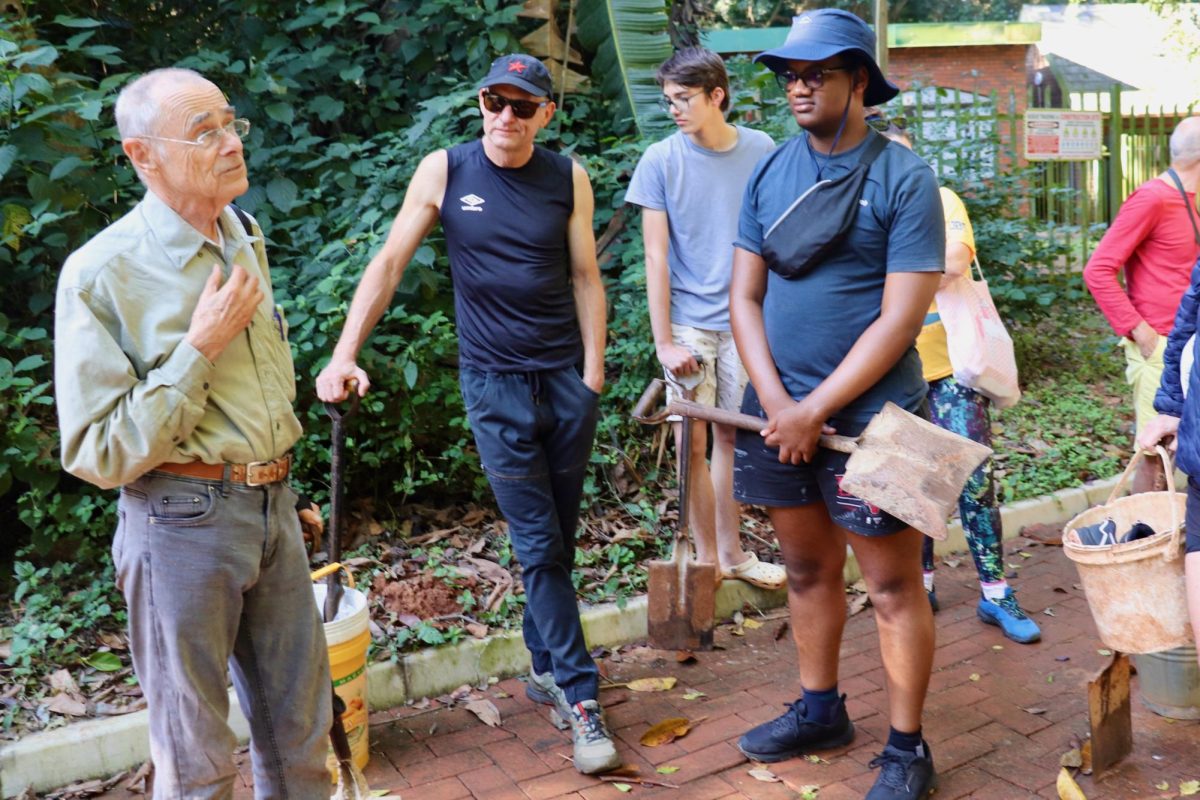On Constitution Hill in central Johannesburg sits both the ruins of one of the country’s most oppressive prisons and its highest court, the Constitutional Court, each contributing to the story of South Africa’s journey from apartheid rule to a developing democracy.
What is left of the prisons has been transformed into an interactive museum. The Constitutional Court, a symbol of the same democracy the prisons attempted to suppress, is the highest court in South Africa, consisting of 11 judges, appointed by the president, who hear cases regarding constitutional matters.
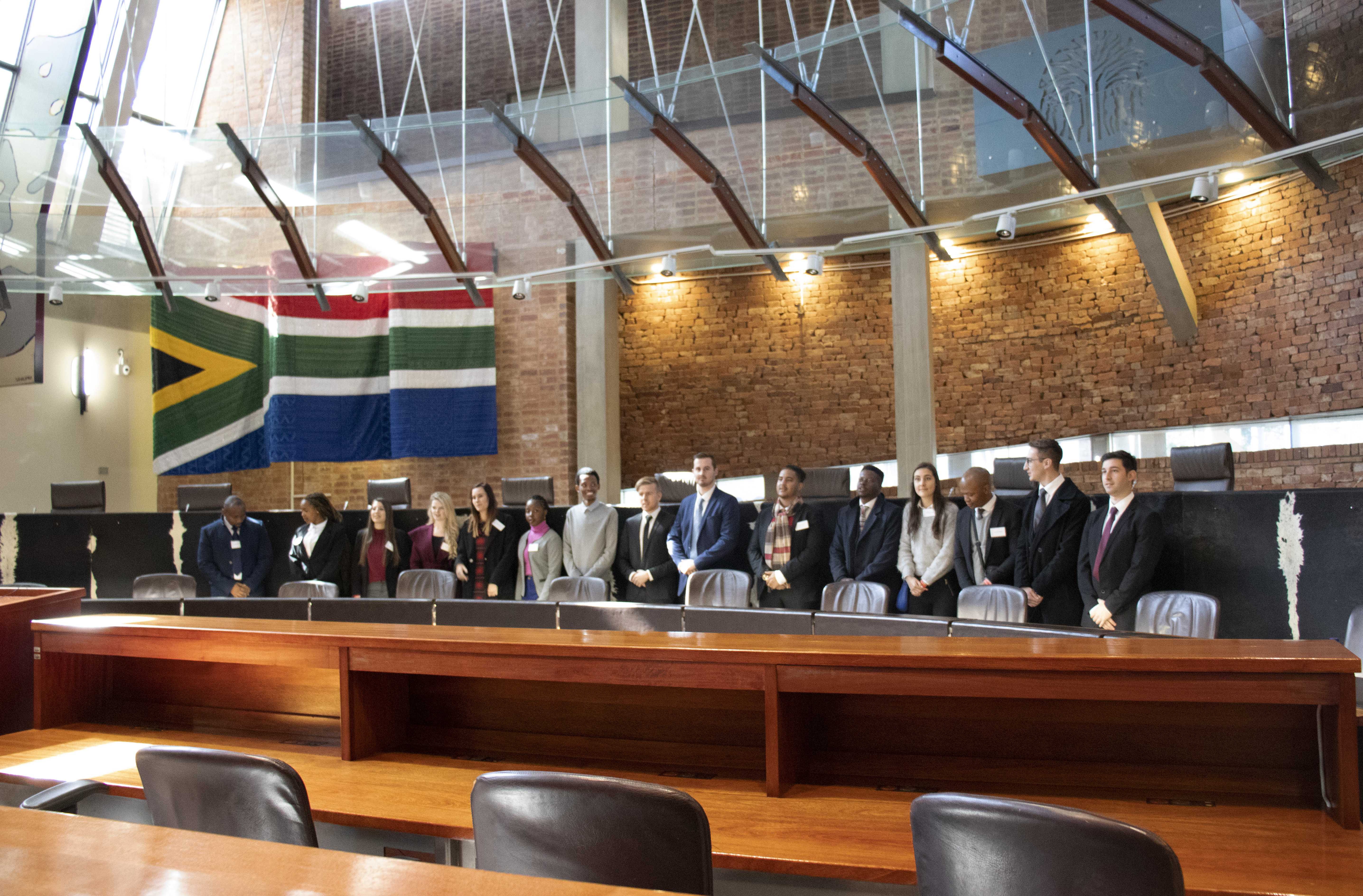
The museum opened on March 22, 2004, following the inauguration of the Constitutional Court on March 21, South Africa’s Human Rights Day. Visitors are able to tour the Old Fort, the Women’s Jail, and Number Four prisons. The spaces that once housed famous prisoners, including Albert Luthuli, Nelson Mandela, Mahatma Gandhi, Albertina Sisulu and Winnie Madikizela-Mandela, and the location of countless executions, has been renovated into an interactive museum in order for visitors to learn the history that often isn’t taught in schools.
“I think it’s super important to understand the past injustices of South Africa,” said Charmaine Motlhabi, a law student at the international law firm Eversheds Sutherlands who was touring the “Con Hill” complex, as it is known, last month along with a group of fellow law students. “More to empower yourself to understand why it’s so important that we do transform and we actually look forward, not backwards.”
Ntsika Gqomfa, a museum tour guide, said that is exactly why the museum exists.
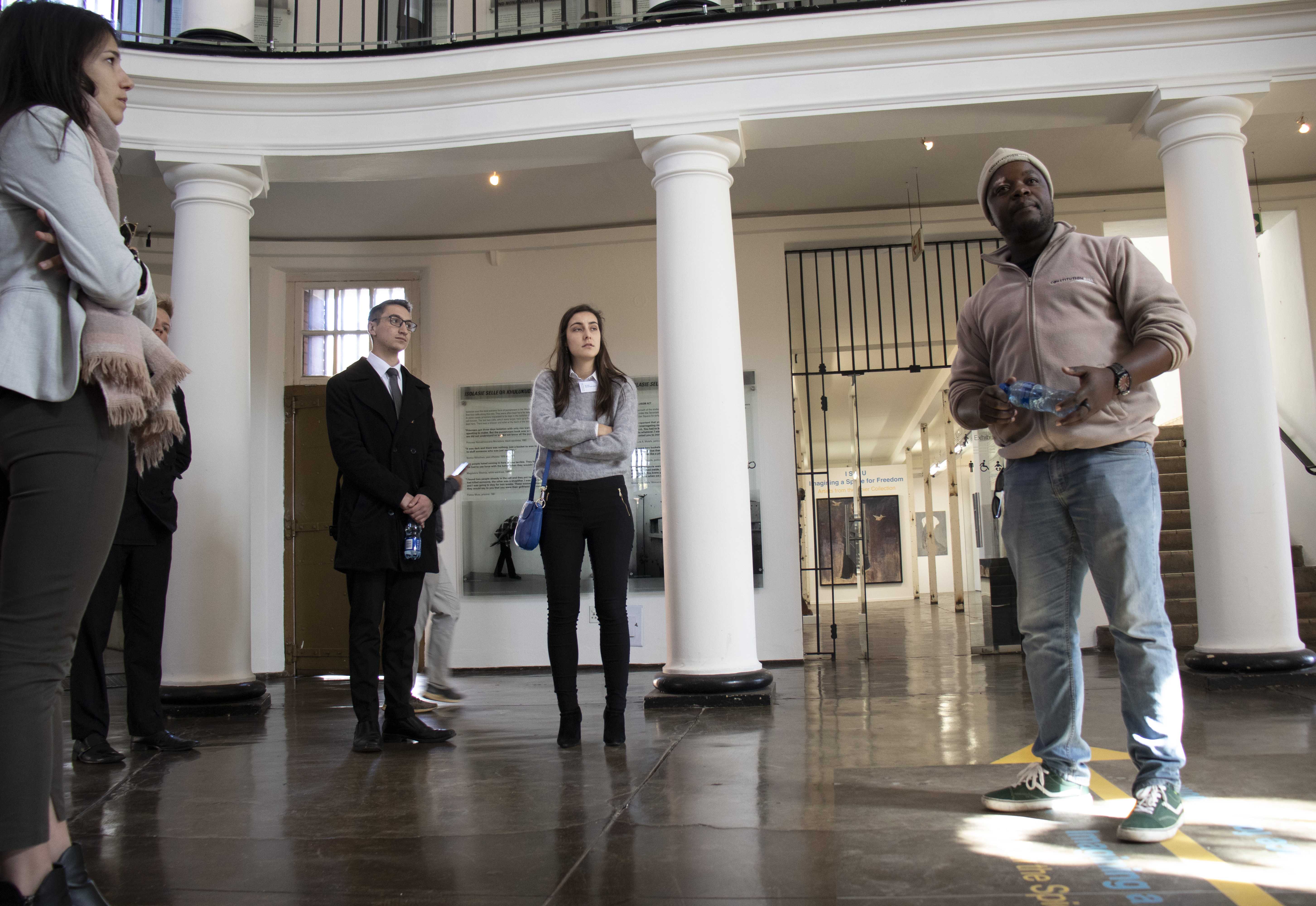
“History is not well communicated in our schools so it’s best that they come here and learn the history,” Gqomfa said. “The only way you can beat history repeating itself is by knowing what happened in the past so that we can eliminate it or some aspect of it repeating itself.
Gqomfa added that having the Constitutional Court at the site of the prison where a lot of dehumanization took place is integral to the values of the country’s highest court.
“Having the court here is saying that at the very same space where human rights were violated, we have the court now to protect them,” Gqomfa said. “We protect human rights in the very same space.”
Thamsanqa Mbambo, also a law student at Eversheds Sutherland, said he has visited Constitution Hill four times. He said he comes from an underpriveleged background, and still sees the remnants of the apartheid regime where he lives.
“A lot of people that come here, they represent the privileged South Africa,” Mbambo said. “The settlements where we stay are still quite segregated so where I’m from. Not a lot has changed.”
Valerie-Anne Winter, a receptionist in the Constitution Hill tour center, understands that resistance to change at a personal level. Winter said her white Afrikaner grandparents grew up in the apartheid system and to them apartheid was normal, as was their use of racial slurs.
“Working here, after having them as role models, it’s two different worlds,” Winter said. “You will never know what someone else went through until you’re in their shoes. You will never know how much pain and humiliation they went through until you are in their shoes.”
Winter said her grandmother, who is still living, has never been to the museum and acknowledged she would not be changed after visiting.
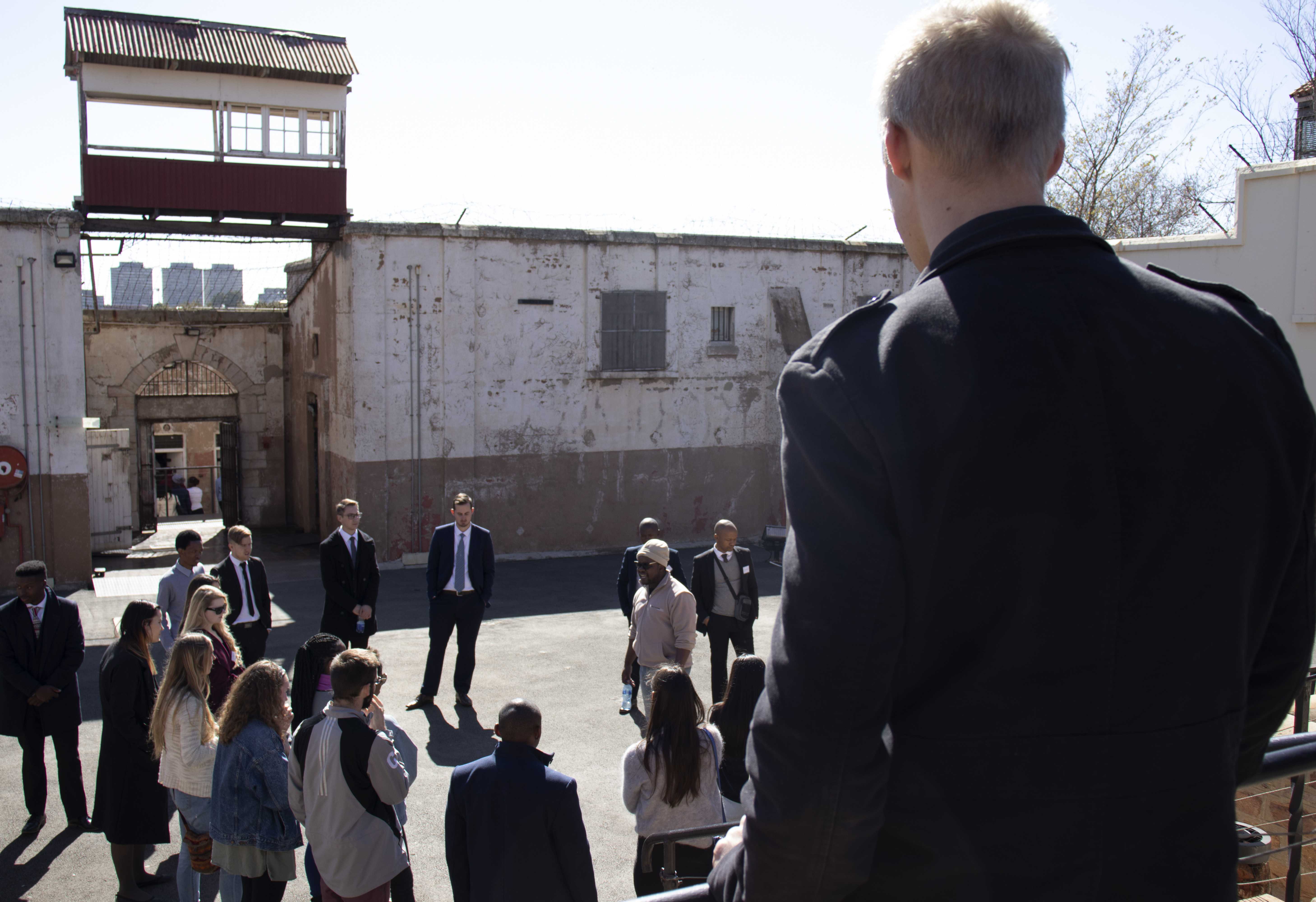
Nthabiseng Rakgwadi, an assistant at the museum’s visitor center, said there are people like Winter’s grandmother who visit the museum, who are in denial about what went on in the prisons and the brutal effects of apartheid that still impact South Africa.
Mbambo, standing with his law school classmates at the end of the tour, said many South Africans are still dealing with the ramifications of a past that is not completely behind them.
“The settlements where we stay are still quite segregated.” Mbambo said. “So I’m not going to give you that whole picture of reconciliation because it’s not, it’s not fine.”
But others who visit the museum are definitely changed by the experience, Rakgwadi said.
“Some of the more emotional people can’t even handle doing the whole tour,” Rakgwadi said.
Gqomfa said he has witnessed that emotion as a tour guide.
“They get angry,” Gqomfa said. “They learn more about the atrocities that happened. and they get to see the actual physical space. When you can see the physical space, then you can start believing that these things happened, how division happened back then, how inequality happened. We still see some inequality happening today, so they will still get to see and take that with them.”
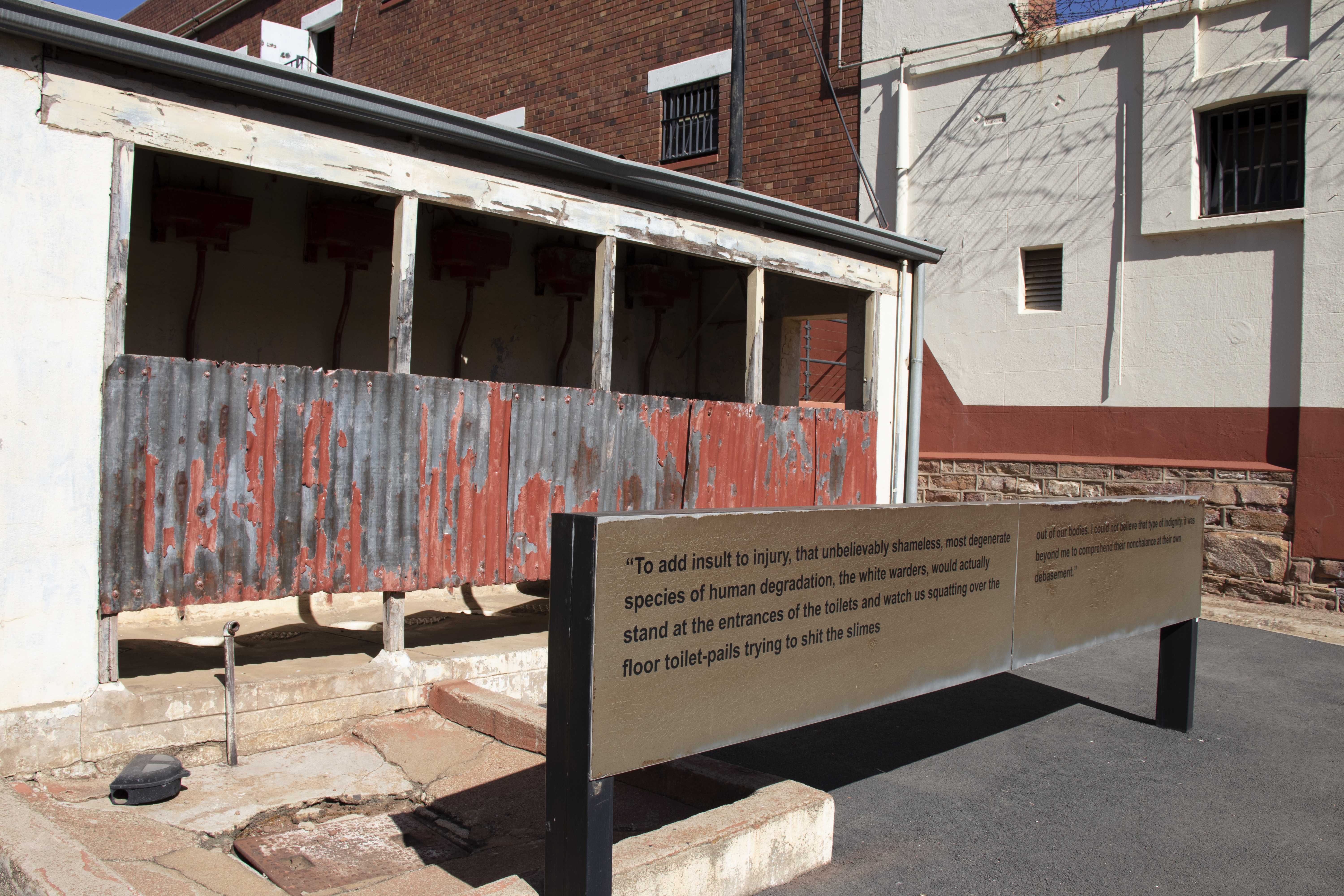
The museum also attracts some South Africans who know the prison’s history intimately. While for many former prisoners the emotional weight of returning is too difficult, Winter said, at least one former political prisoner who goes by the name “Lillian” comes to Constitution Hill almost every day.
“She’s made peace with it,” Winter said.
Winter said the museum hosted prisoner workshops to learn from prisoners like Lillian about what happened there.
“They had the people come in and explain what they experienced,” Winter said, “the humiliations, the violation, just to say this is what happened to me. ‘They had me doing this job, they had me strip naked, they had me do this, stand like this, eat this. This is exactly what we went through’.There is still not enough information, because not everyone wants to talk about the humiliations they’ve suffered.”
But Winter said that Con Hill visitors can sense these stories, even the ones untold, simply by visiting the museum.
“If you go on a tour, and you go through the isolation cells, if you stand and touch the walls, you look at the back of the doors, if you look at the room itself, you feel that heartache, you know what they’ve been through,” Winter said. “It’s actually in the walls, it’s in the cement that’s covering the floor, it’s in whatever structure it is built upon. You can feel it.”














































